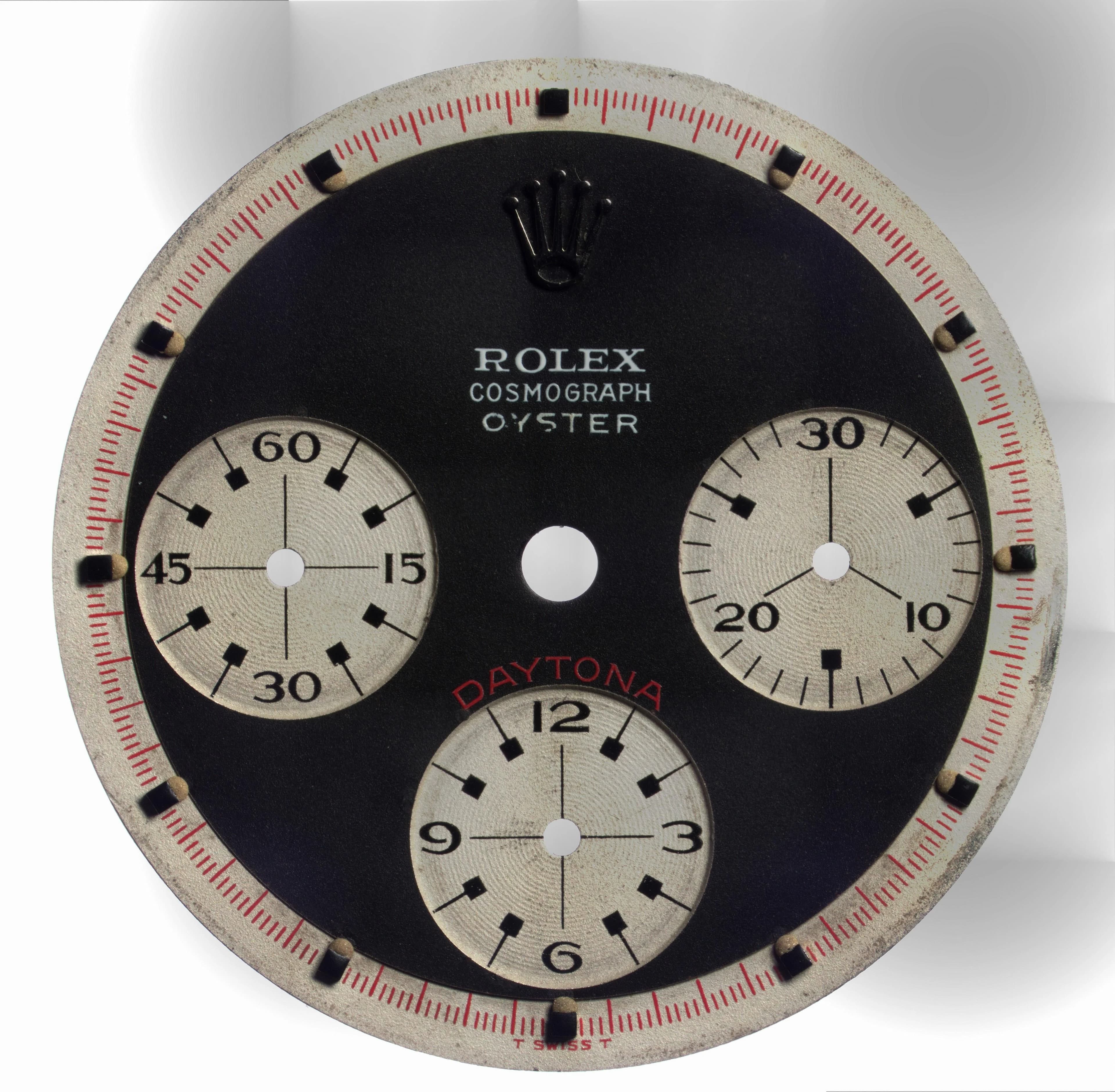We can divide Daytona models with a "Paul Newman" dial into two categories: first, the references with non-screw-down pushers (6239, 6262, 6241, 6264), and second, the versions with screw-down pushers ensuring a waterproof case (6263, 6265, 6240…), which are rarer and more highly valued in the collector's watch market.
Each of them has its own technical and aesthetic characteristics, such as the "Panda" dial (white dial with black sub-dials) or the "Reverse Panda" (black dial with white sub-dials), the presence or absence of the "Oyster" inscription on the dial, "millerighe" pushers depending on the fineness of the grooves and the production period, and the red minute track outline or lack thereof, depending on the reference.
The specificity of the reference 6263 "RCO":
To fully understand the unique case of this exceptionally rare watch—one of the least produced and most coveted models—some explanation is necessary regarding what gives it its value and singularity: the dial.
The OYSTER inscription was only introduced with the screw-down pushers, which were designed to ensure a waterproof case. The non-screw-down pushers on the earlier references (6239, 6262, 6264) did not provide water resistance, and as a result, Rolex could not use its signature "Oyster" designation on the dial.



























